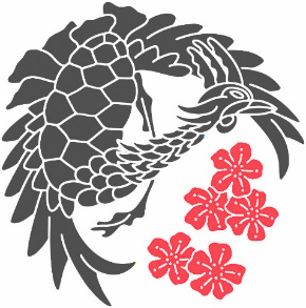1892 | Olmsted, Burnham and Chicago accept Japan's offer to build the Phoenix Pavilion
The role of the Wooded Island, as designed by Fredrick Law Olmsted, America’s foremost landscape architect and the chief of the exhibition’s landscape design, was to provide exposition visitors a quiet sylvan setting, unencumbered by buildings, in which to escape the hustle and bustle of the exposition.
In February 1892, following lengthy negotiations between the Japanese and exposition officials, Daniel Burnham, the exhibition’s chief of construction, enthusiastically wrote to Olmsted to explain that the Japanese “propose to do the most exquisitely beautiful things . . . and desire to leave the buildings as a gift to the City of Chicago.” Shortly thereafter, Olmsted agreed , and the Japanese Commission was granted permission to build on two acres at the northern portion of the fifteen-acre Wooded Island, provided that Chicago would maintain the building permanently and properly on its site on the Wooded Island as a symbol of the relationship between the two countries and as a place to experience Japanese culture.
